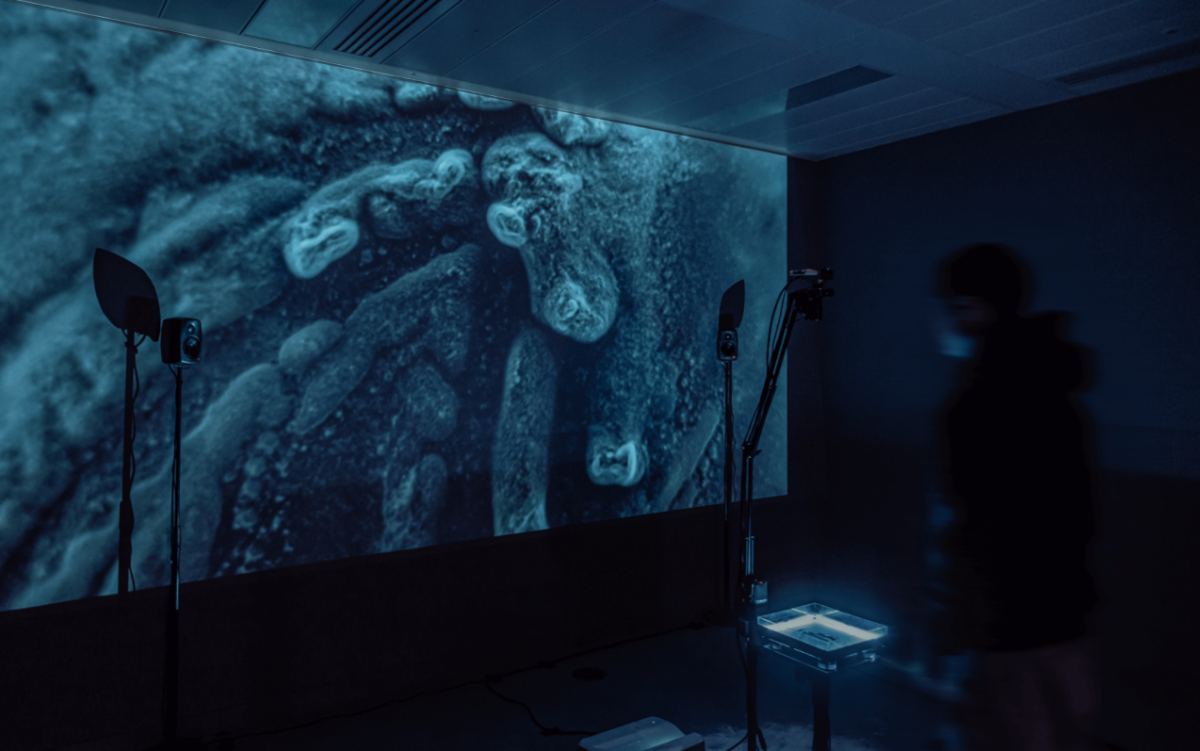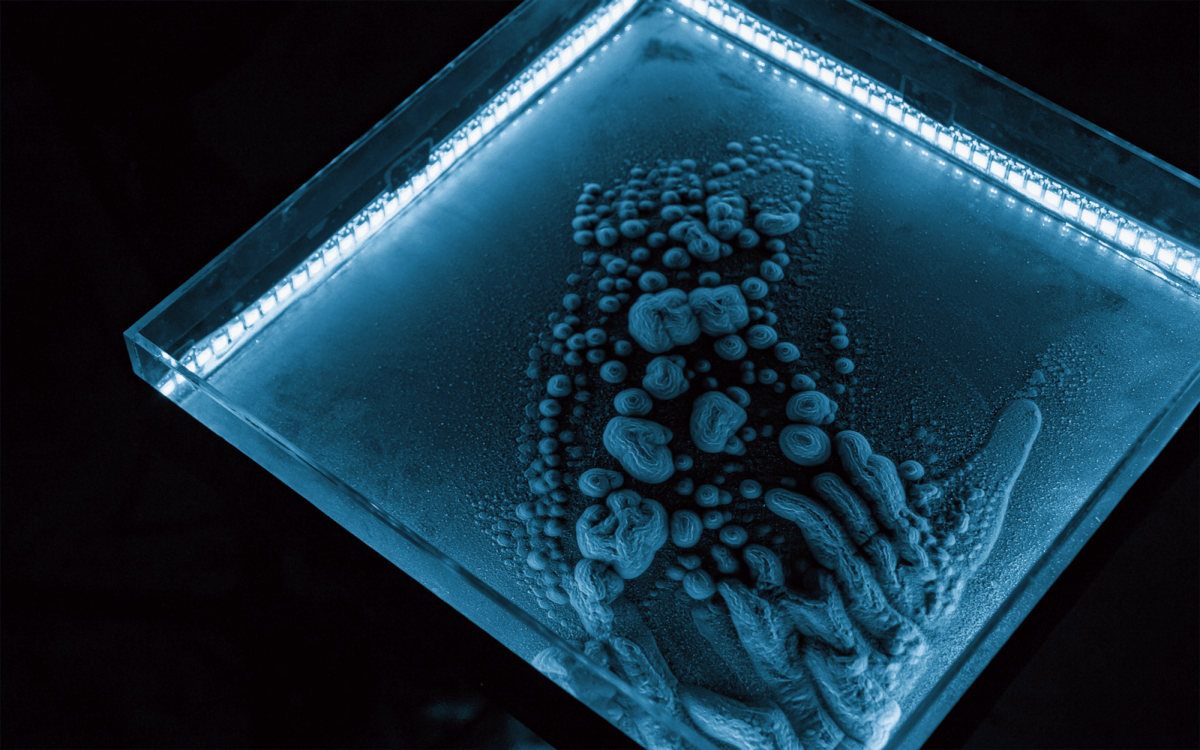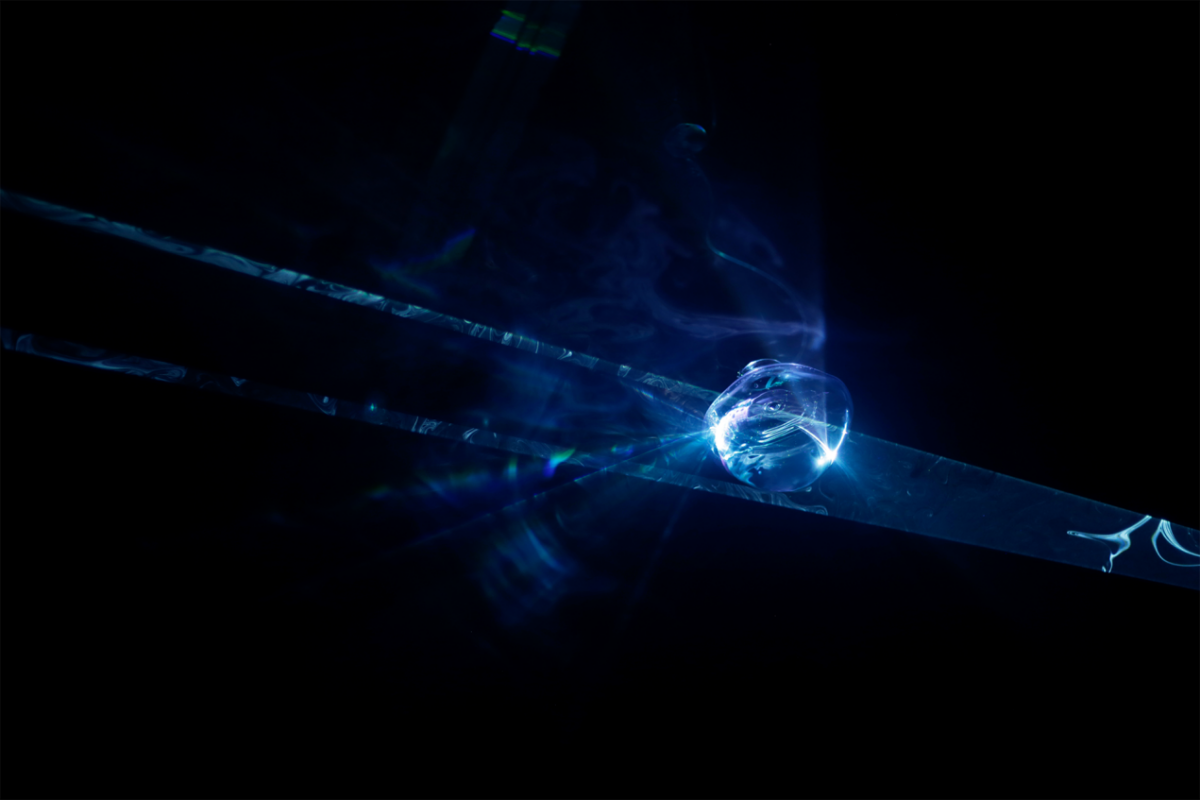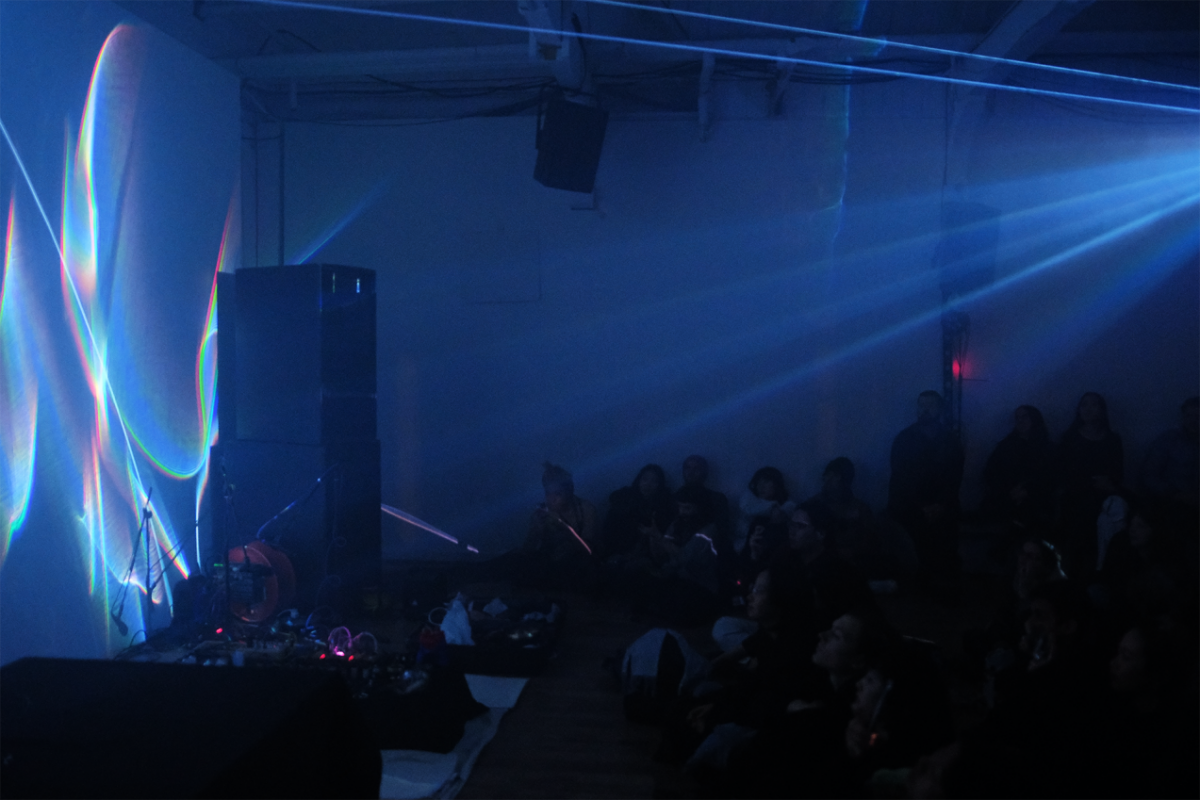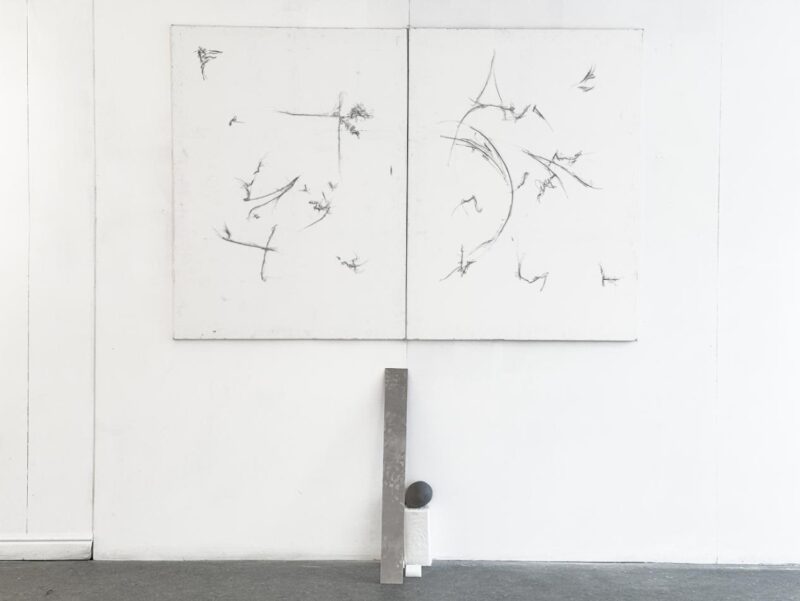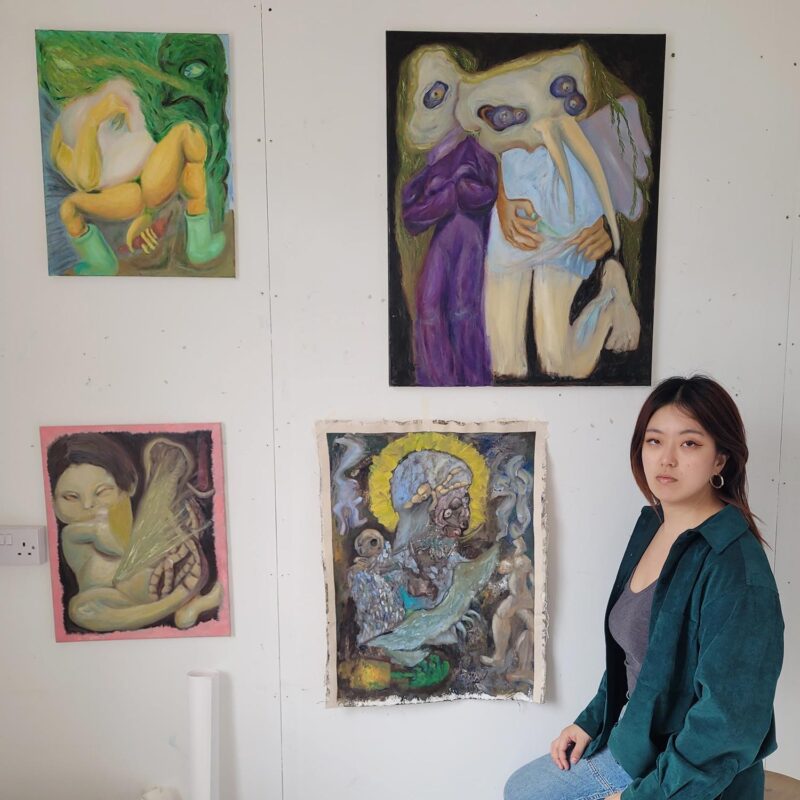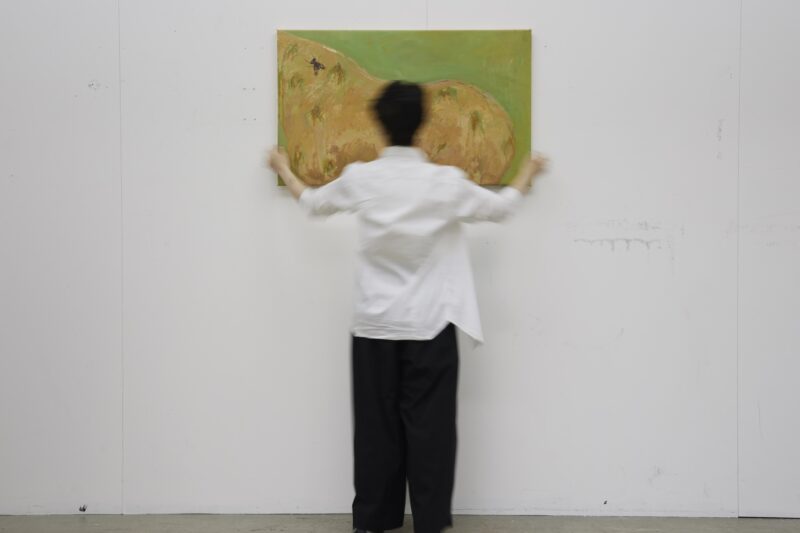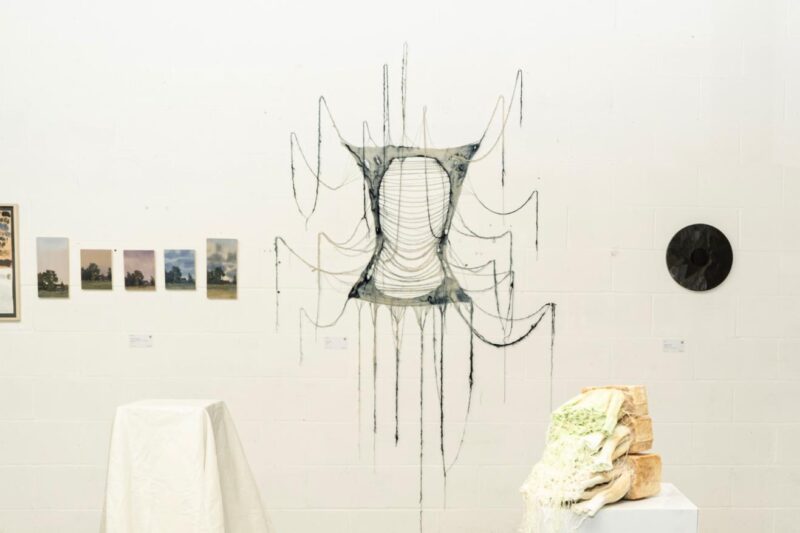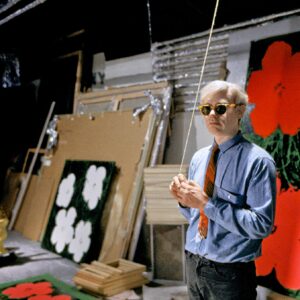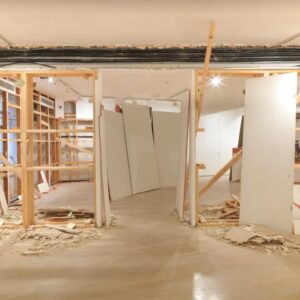What distinguishes living from non-living entities? When inorganic materials can self-organise, can they be understood as a form of life? And how do we engage in a “dialogue” with them?
In Evolution, Ke Peng explores these profound ontological questions through the fusion of art and science.The subtle particles, wandering erratically within a vibrating environment—interacting, fragmenting, and reassembling—seem to enact the grand history of life’s evolution on a microcosmic scale. These particles, familiar yet alien, form shapes reminiscent of mountains and valleys on distant planets, or the spreading colonies of bacteria in a Petri dish. Their spontaneous movement intrigues and fascinates, much like the childhood wonder of watching tadpoles flicking their tails in a pond.
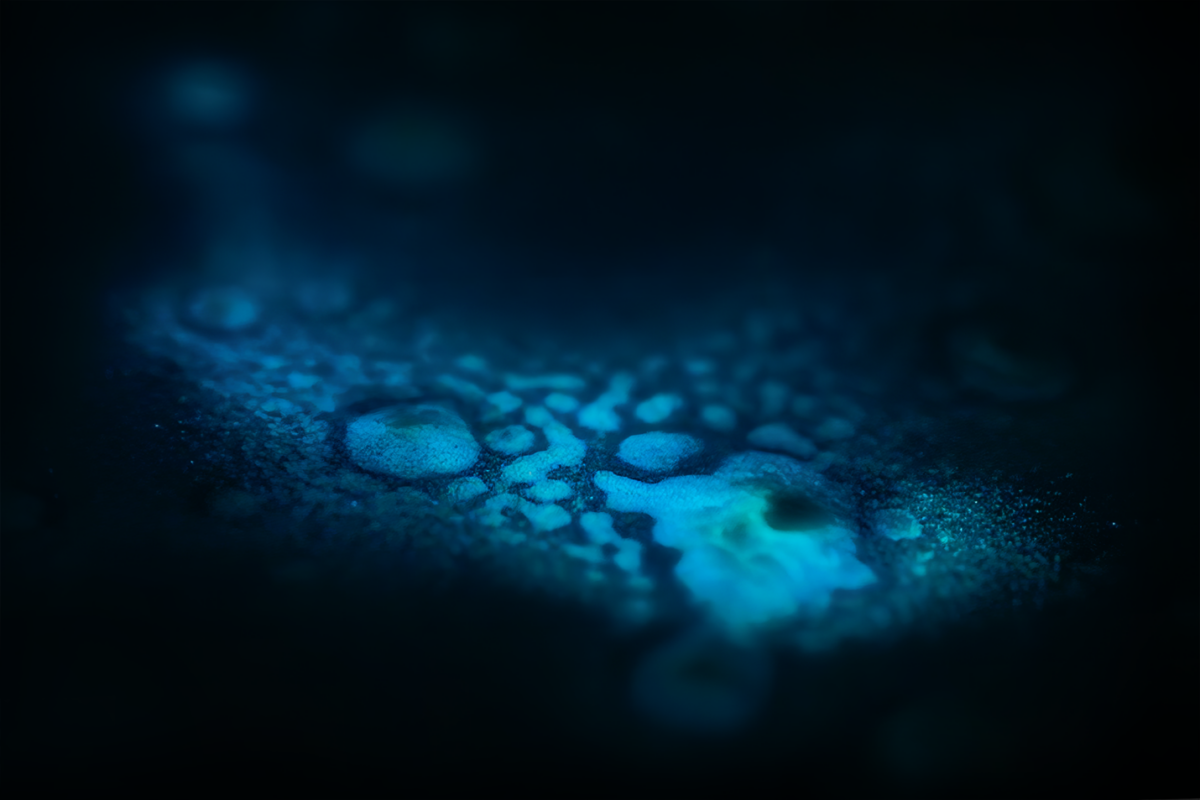
The use of sound in Evolution is particularly remarkable. It not only influences the movement of the particles but evolves alongside them, creating a feedback loop within an organic ecosystem that mirrors the delicate balance of natural ecosystems on a microscopic level. This mysterious, ever-changing language of sound offers a chance for us to engage in a subtle dialogue with materials, reflecting the interconnectedness of all things and the cyclical nature of existence.
Evolution was the result of nearly a year of collaborative research between Ke Peng and sound artist Bryan Yueshen Wu. The work has been exhibited at the V&A Museum in London, Morley Gallery, and performed at IKLECTIK.
Ke Peng’s works often focus on the physics of everyday phenomena while simultaneously exploring broader natural laws and philosophical inquiries. This is evident in her piece Oceanosmos, where the ripples on the surface of water in a glass vessel refract light, tracing long spectral lines through space. A single drop of water falls, sending a “resonance” of light and sound through the environment—a surreal moment of inner and outer harmonics converging. Inspired by Romain Rolland’s “oceanic feeling”—a spiritual experience where the self and the world merge—Oceanosmos creates a world between the deep sea and the womb, dissolving the boundaries of the self and forming a continuous connection with the surrounding space. The subtle interplay of light on the water’s surface symbolizes the fluidity of consciousness, where the self and the external world blend into an inseparable state.
Unlike many new media works driven by technology and data visualization, Ke Peng’s art emphasizes the multi-sensory experience of the viewer within physical space. Her practice invites the body to listen, to converse, and to engage in a dialogue with the materials around it. In the realm where art meets science, Peng Ke’s work stands out for its innovative approach, marked by interdisciplinary collaboration and a distinctive philosophical perspective. Using light, materials, and sound, she draws the viewer into an expansive space where the body resonates with the vibrations of materials, while fingers trace the dust in beams of light, feeling the vortex stirred by their subtle interaction.
